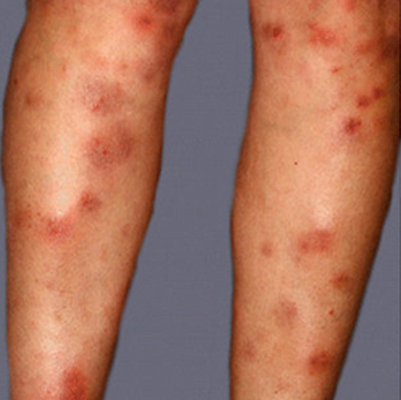Abscess
What is a Skin Abscess?
A skin abscess is a localized collection of pus beneath the skin, usually caused by an infection or sometimes due to foreign material trapped under the skin.
It often appears as a painful, swollen lump that feels warm and tender to touch. The skin around the abscess usually looks red or pink.
Symptoms of a Skin Abscess
-
A painful, soft or compressible lump, red and tender to touch
-
As the abscess develops, it may form a head (“pointing”)
-
Pus discharge or spontaneous rupture can occur
-
Without proper care, the abscess may enlarge and worsen
-
Infection may spread deeper into tissues or enter the bloodstream
If the Infection Spreads, Symptoms May Include:
-
Fever and chills
-
Nausea or vomiting
-
Increasing pain at the site
-
Expanding redness or swelling of the skin
Spaks Homeopathy Approach:
Instead of just draining the abscess, Homeopathy focuses on treating the infection, reducing pain, promoting natural drainage, and preventing recurrence—all while boosting the body’s own healing power without side effects.
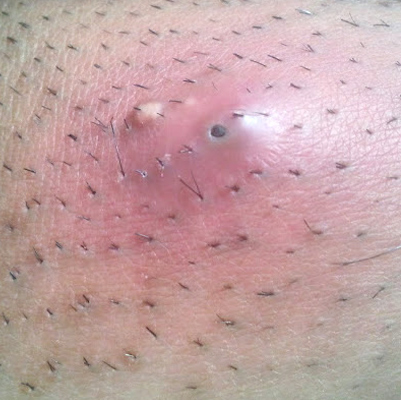
Acne
Acne – Causes, Symptoms & Treatment
Acne (Acne vulgaris) is one of the most common skin problems that almost everyone experiences at some stage of life.
It occurs when the skin pores and hair follicles become clogged with oil (sebum) and dead skin cells.
Acne usually appears on the face, but it may also occur on the chest, shoulders, and back.
Types of Acne
-
Comedonal Acne (Non-inflammatory):
-
Whiteheads (closed pores)
-
Blackheads (open pores)
-
-
Inflammatory Acne:
-
Red pimples
-
Pus-filled pimples (pustules)
-
Painful lumps (nodules, cysts)
-
Symptoms of Acne
-
Whiteheads (closed clogged pores)
-
Blackheads (open clogged pores)
-
Small red, tender bumps (papules)
-
Pus-filled pimples (pustules)
-
Large, painful lumps beneath the skin (nodules)
-
Deep pus-filled lesions under the skin (cystic acne)
Causes of Acne
-
Hormonal changes (especially during puberty, pregnancy, PCOS)
-
Oily skin
-
Unhealthy diet (junk food, oily food, excess sugar)
-
Stress and lack of sleep
-
Dirt and bacterial infection
-
Side effects of certain medicines or cosmetics
Treatment of Acne
-
Topical Treatment:
-
Doctor-prescribed creams, gels, or cleansers.
-
-
Systemic Treatment:
-
Antibiotic medicines
-
Hormonal therapy (especially in women)
-
-
Lifestyle & Diet:
-
Balanced diet (fruits, vegetables, whole grains)
-
Drink enough water
-
Regular exercise
-
Avoid oily, junk, and sugary foods
-
Timely treatment helps prevent scars and permanent marks.
Acne Treatment at Spaks Homeopathy
At Spaks Homeopathy, acne is treated naturally from the root.
No side effects
Restores hormonal balance
Detoxifies and purifies skin from inside
Reduces scars and dark spots
Safe and permanent solution
For clear and healthy skin, choose Spaks Homeopathy
Email: info@spakshomeopathy.com
Phone: +91 8700458818
Address: E-38, Budh Vihar, Badarpur, New Delhi – 110044
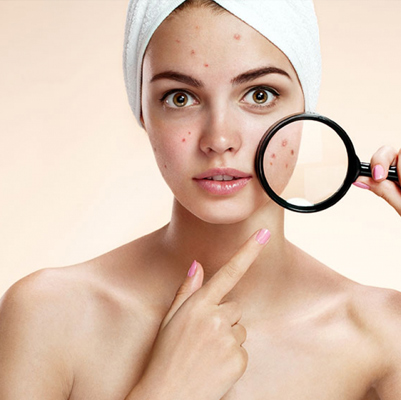
Chickenpox
Chickenpox (Varicella)
Description:
Chickenpox is a highly contagious viral infection caused by the varicella-zoster virus. It commonly affects children but can also occur in adults, where it is usually more severe. It spreads through coughing, sneezing, or direct contact with the fluid from blisters.
Effects / Symptoms:
-
Fever, weakness, and loss of appetite
-
Red, itchy rash that turns into fluid-filled blisters and later scabs
-
Irritability in children due to continuous itching
-
Mild body pain or headache in some cases
-
Recovers in 7–10 days, but scratching may leave scars or cause skin infection
Sparks Homeopathy Treatment:
At Sparks Homeopathy, the focus is on strengthening the immune system, reducing itching, and supporting faster healing without side effects. Treatment is selected according to the patient’s symptoms and constitution. Common remedies include:
-
Rhus toxicodendron: For intense itching, burning, and restlessness
-
Antimonium tartaricum: For large pustules with weakness or breathing problems
-
Belladonna: For high fever with redness and inflammation
-
Mercurius solubilis: For pus-filled blisters, foul odor, and sweating
-
Pulsatilla: For mild cases in children, especially when rash keeps changing
-
Sulphur: For persistent itching and to help prevent scarring
Note: Chickenpox is usually self-limiting, but correct homeopathic support helps in faster recovery and comfort. Always consult a qualified homeopath at Sparks Homeopathy before starting medicines, especially for infants, adults, or if complications appear.
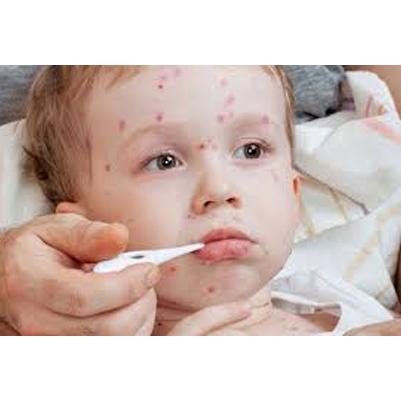
Corns
Overview
Corns are thickened, calloused areas of skin that develop as a natural defense mechanism to protect skin against friction, pressure, or irritation. They usually occur on the feet (toes, soles, heels) or hands.
Risk factors include:
-
Wearing ill-fitted shoes (too tight or too loose)
-
Walking barefoot frequently
-
Not wearing socks with shoes
-
Foot deformities like bunions or hammer toe
-
Joint issues leading to uneven weight distribution
Prevention involves reducing pressure and friction, wearing well-fitted shoes, and keeping the feet moisturized and protected.
Symptoms
-
A thick, rough patch of skin
-
A hardened, raised bump on toes, sole, or hands
-
Tenderness or pain under the skin, especially while walking
-
Flaky, dry, or waxy skin on the affected area
Effects
-
Pain and discomfort during walking or standing
-
Altered gait or posture due to foot pain
-
Secondary skin infections if corns crack or bleed
-
Recurrence if underlying causes (like footwear or foot deformity) are not corrected
-
Increased risk of complications in people with diabetes or poor circulation
Treatment
Conventional Care
-
Medicated pads/creams (with Salicylic Acid) to soften and dissolve thickened skin
-
Regular foot soaks in warm water followed by gentle exfoliation (pumice stone)
-
Moisturizing creams to prevent dryness and cracking
-
Wearing properly fitted shoes and socks
-
Surgical correction in severe recurrent cases (for underlying deformities)
Avoid cutting or shaving corns at home—this can cause infections. People with diabetes, neuropathy, or poor circulation should always consult a doctor.
Spaks Homeopathy Treatment
Homeopathy focuses on treating the root cause of corn formation and reducing recurrence. Remedies are selected according to the type, location, and pain pattern.
Commonly used remedies include:
-
Antimonium Crudum – for hard corns with thick, rough skin and tenderness
-
Silicea – for recurrent corns that are painful and inflamed
-
Graphites – for corns with cracks, soreness, and moisture
-
Ferrum Picricum – for soft corns between toes, painful while walking
-
Ranunculus Bulbosus – for corns with sharp, burning pain on soles
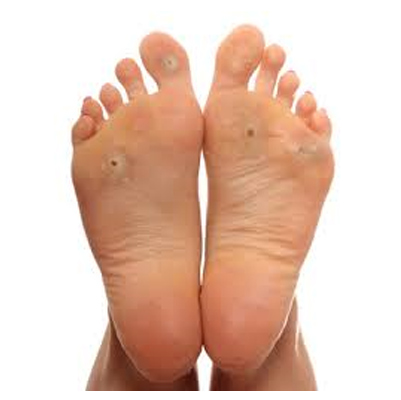
Cracked Heels
Overview
Cracked heels are a common problem that may develop into painful fissures or openings if left untreated. You may see dehydrated feet as a minor nuisance; however it will cause any problems like plant infections and ulcerations.
Foot care is an especially important issue for the increasing number of diabetic patients globally.
There are numerous products that cannot only combat the dryness but may be helpful in treating a variety of skin problems, including athlete's foot and psoriasis.
Cracks within the heels are usually caused by depleted wet. These cracks will become sore and should even bleed. Seriously dry feet will occur for variety of reasons, including:
Don't ignore dry, cracked heels, as over time you may develop deeper fissures, which increases your risk of infection.
If self-care measures do not help, speak along with your doctor concerning different treatment choices.
Symptoms
•flaky skin
•itching
•pain, possibly severe
•bleeding
•red, inflamed skin
•ulceration
•a loss of feeling in your heel
•cellulitis, an infection
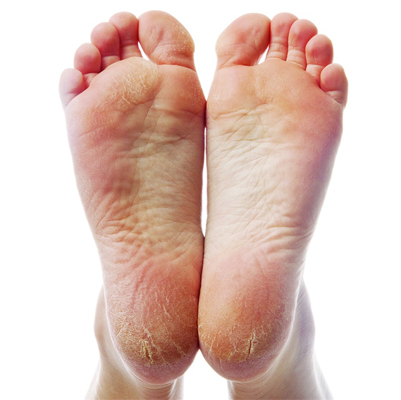
Ecchymosis
Ecchymosis
Overview
Ecchymosis is the medical term for a bruise, a skin discoloration caused when small blood vessels (capillaries) beneath the skin rupture due to trauma, injury, or certain medical conditions.
When the blood vessels break, blood leaks beneath the skin and collects in the tissues. This trapped blood appears as a purple, blue, or black patch. Over time, as the body reabsorbs the blood, the discoloration fades.
Symptoms
-
A skin discoloration larger than 1 cm in size
-
Initial red or purple patch that changes color over time:
? Purple/Blue → Black → Brown → Yellow (as healing occurs) -
Tenderness or pain at the site
-
Sometimes mild swelling around the area
-
Sensitive to touch
Effects of Ecchymosis
-
Usually harmless and heals naturally
-
May cause temporary pain or discomfort
-
In severe cases, can indicate:
? Blood clotting disorders
? Vitamin deficiencies (C, K)
? Side effects of blood-thinning medications -
Repeated or unexplained ecchymosis may signal an underlying health problem
Homeopathic Treatment (Spaks Homeopathy)
Homeopathy helps in faster healing of bruises, pain relief, and preventing recurrent ecchymosis by strengthening blood vessels.
Arnica Montana – Best for bruises, pain, swelling, and black-blue discoloration.
Bellis Perennis – For deep tissue bruises, especially after falls or surgery.
Ledum Palustre – For bruises with cold sensation, better by cold application.
Hamamelis Virginiana – For ecchymosis with soreness and venous congestion.
Phosphorus – For recurrent bruising due to fragile blood vessels.
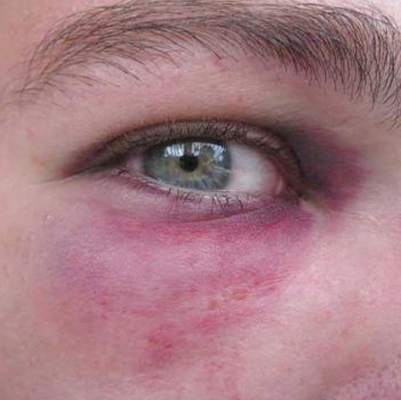
Eczema
Eczema
Overview
Eczema is a chronic skin condition that causes red, itchy, inflamed patches on the skin.
It often begins with itchy rashes on cheeks, chin, chest, neck, inner elbows, or behind the knees, but it can appear anywhere on the body.
Doctors usually diagnose eczema by checking your skin, asking about your symptoms, family history, and skin care habits, and ruling out other conditions.
Eczema can affect both children and adults. While it is not contagious, it can be triggered by allergies, irritants, stress, or a weak immune response. Understanding your triggers is the first step toward controlling eczema and preventing flare-ups.
Symptoms
-
Dry, sensitive skin
-
Red, inflamed patches
-
Intense itching (sometimes severe enough to cause bleeding from scratching)
-
Dark-colored skin patches
-
Rough, leathery, or scaly skin
-
Oozing or crust formation
-
Swelling in affected areas
The constant urge to scratch leads to the “itch-scratch cycle,” which worsens the condition.
Effects of Eczema
-
Persistent discomfort and irritation
-
Disturbed sleep due to itching
-
Risk of secondary infections if skin is broken by scratching
-
Emotional stress and low confidence due to visible rashes
-
In children, it can sometimes affect growth and daily activities
Homeopathic Treatment (Spaks Homeopathy)
Spaks Homeopathy focuses on treating the root cause of eczema, not just the symptoms. Remedies are personalized based on the patient’s skin type, triggers, and overall health.
Graphites – For eczema with sticky, oozing discharge and thickened skin
Sulphur – For intense itching, burning, and redness, worse at night
Mezereum – For crusty eruptions with severe itching and oozing
Rhus Toxicodendron – For eczema with blister-like eruptions and restlessness
Petroleum – For very dry, cracked, and rough eczema patches
At Spaks Homeopathy, treatment helps to:
-
Reduce itching, redness, and inflammation
-
Heal skin naturally without side effects
-
Prevent recurrence of flare-ups
-
Improve overall immunity and skin health
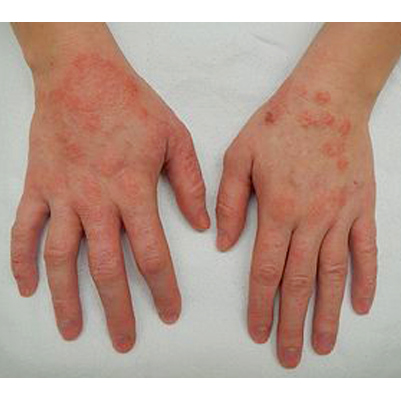
Erythema Nodosum
Overview
Erythema nodosum may be a condition that causes painful red bumps beneath the skin on a human shins. Sometimes the bumps also have an effect on the ankles, knees, thighs, and forearms.
The condition is one in all the foremost common types of a rare inflammatory problem known as panniculitis that affects subcutaneous fat beneath the skin.
A majority of erythema nodosum (EN) cases occur in people between the ages of 20 and 45 years old. Women are five times more likely than men to develop EN.
The condition is usually relatively harmless, but it can be a sign of an underlying infection, other inflammatory conditions, or an abnormal response to an allergen or medication.
Symptoms
- Erythema nodosum can develop suddenly without any warning signs.
- Some folks expertise non-specific symptoms before linear unit lesions develop.
- Many of the first signs of linear unit, particularly joint pain, continue once the sores develop and will last for weeks to months once they need gone.
- Common early signs and symptoms of EN include:
- fever
- unexplained exhaustion
- lung, throat, or nose infections
- joint and muscle pain and weakness
- swollen joints, often the ankles and knees
- conjunctivitis
- cough
- weight loss
